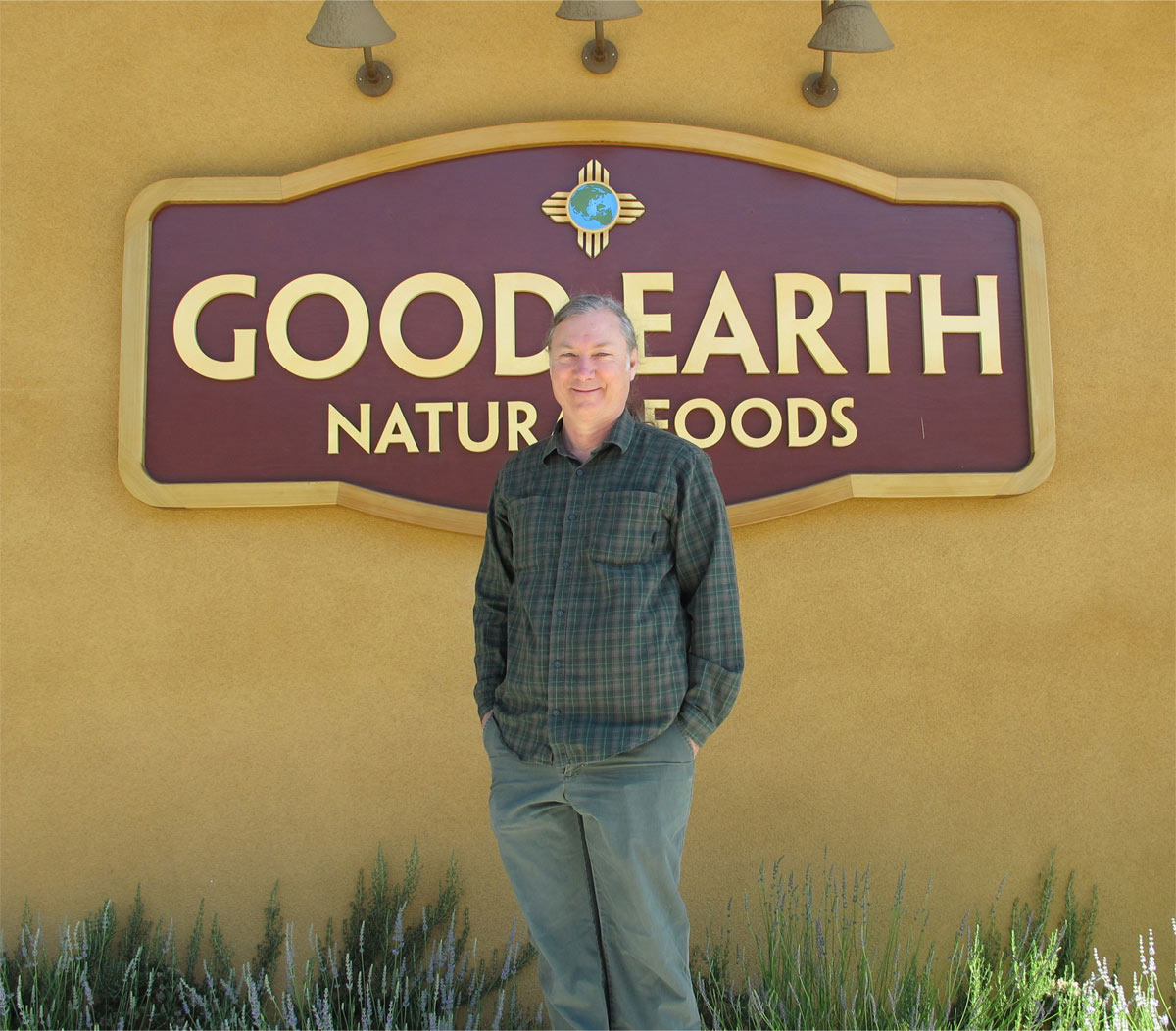But these impressive statistics aside, Good Earth is more than a grocery store—it’s more like a powerful ship churning through rough waters, waving the banner of a food revolution. It’s an education center and community gathering place. It’s been an active participant in the development of the organic standards now reflected in the National Organic Program. Due to the nature of its vision—organic as a way to heal our bodies and the earth—it finds itself at the cutting edge of some of the most important discussions of our time: organic versus industrial agriculture, the negative impact of genetically modified organisms on our bodies and our planet, the right to save seeds and the right to know what’s in the food we’re eating.
Pioneering the organic label
Co-owner Mark Squire knows the seas well—he came on board as a 16-year old hippie and foodie, offering work in exchange for food, back in 1969. In 1975, Mark and Edwin Cariati purchased the store, and along with the later addition of partner Al Baylacq and a dedicated staff, have built it into the successful natural retailer it is today.
Until 1973, there was no official definition of “organic.” Employees doubted some growers’ claims about their produce.
“We realized we needed to give them a standard and a certification program,” Mark said. With the launching of California Certified Organic Farmers (CCOF) in 1973, he joined farmers in crunching out the details of what the label should mean. His strong involvement was met with skepticism, but “as the years went by, they realized my connection to the marketplace was an important voice at the table,” Mark said.
California became the first state to institutionalize organic standards into law; much of the work was incorporated into the National Organic Program standards published in 1997.
Emergence of GMOs, and fast response
When Mark first learned about GMOs from a talk by molecular biologist John Fagan, he recalled Rachel Carson’s Silent Spring. “The same corporations who brought us pesticides were now bringing us GMOS,” he said. He began educating store staff and customers. By 2004, Marin County’s ban on outdoor cultivation of GMOs had passed.
Mindee Jeffery, product and standards analyst/category manager, began contacting manufacturers, pressing them to disclose and get rid of any GMOs in their products. “At first it was all education—most of our vendors didn’t know much about the GMO issue,” she said. “Our efforts began as a fact-finding mission—which products were susceptible. When organic was not available, we’d ask manufacturers to change their ingredients if products contained corn, soy or canola.”
After several years of educating staff and consumers about GMOs, the Good Earth brain trust realized they needed an accessible method of getting consumers complete information about the products on the shelf. “Mark is our database programmer, which allowed us to create a cutting edge attribute labeling system at the shelf. Our customers can read the icons on every price tag and know immediately if a product is Non-GMO Project Verified, Vegan, or Local, among other things,” Mindee said.
Launching the Non-GMO Project
In 2007, Good Earth and two other retailers started the Non-GMO Project; Mark is currently on the Board of Directors.
Maintaining the store’s commitment to “well-fed and well-informed” customers, Good Earth will once again celebrate October as Non-GMO Month. Over the years this has included displays of non-GMO products, books, educational posters and question boards, giveaways, hosted movies, and question/answer sessions with Mark.
Regarding possible customer confusion over the meaning of organic and non-GMO labels, Mark acknowledges the confusion and advocates that the Project introduce a secondary label acknowledging organic producers. “Non-GMO is only part of the solution,” he said. “When organic regulations came into effect, there were no GMOs around. But now it’s time to monitor GMOs in organic—our experience has shown there is contamination and we need to deal with it. The Organic Program needs to establish threshold levels immediately and also require GMO testing. Without it, there’s no level of assurance for customers.”
Seems like sound, visionary advice from Good Earth Natural Foods to all of us, in the face of DARK acts and GMO threats.









